系
客
服

扫码留言



1.Ahmad R. Bruxism in children. J Pedod 1986;10:105-126.
2.Bader G, Lavigne G. Sleep bruxism; an overview of an oromandibular sleep movement disorder. Sleep Med Rev 2000;4:27-43.
3.Bartlett DW, Coward PY, Nikkah C, Wilson RF. The prevalence of tooth wear in a cluster sample of adolescent schoolchildren and its relationship with potential explanatory factors. Br Dent J 1998;184:125-129.
4.Bernal M, Tsamtsouris A. Signs and symptoms of temporo- mandibular joint dysfunction in 3 to 5 year old children. J Pedod 1986;10:127-140.
5.Carlsson GE, Egermark I, Magnusson T. Predictors of bruxism, other oral parafunctions, and tooth wear over a 20-year follow-up period. J Orofac Pain 2003;17:50-57.
6.Castroflorio T, Bargellini A, Rossini G, Cugliari G, Rainoldi A, Deregibus A. Risk factors related to sleep bruxism in children.
A systematic literature review. Arch Oral Biol 2016;60:1618-1624.
7.Egermark-Eriksson I, Carlsson GE, Ingervall B. Prevalence of mandibular dysfunction and orofacial parafunction in 7-, 11- and 15-year-old Swedish children. Eur J Orthod 1981;3:163-172.
8.Ekfeldt A. Incisal and occlusal tooth wear and wear of some prosthodontic materials.
An epidemiological and clinical study. Swed Dent J Suppl 1989; 65:1-62.
9.Glaros AG, Tabacchi KN, Glass EG. Effect of parafunctional clenching on TMD pain. J Orofac Pain 1998; 12:145-152.
10. Hachmann A, Martins EA, Araujo FB, Nunes R. Efficacy of the nocturnal bite plate in the control of bruxism for 3 to 5 year old children. J Clin Pediatr Dent 1999;24:9-15.
11. Hanamura H, Houston F, Rylander H, Carlsson GE, Haraldson T, Nyman S. Periodontal status and bruxism. A comparative study of patients with periodontal disease and occlusal parafunctions. J Periodontol 1987;58:173-176.
12. Heikinheimo K, Salmi K, Myllärniemi S, Kirveskari P. Symptoms of craniomandibular disorder in a sample of Finnish adolescents at the ages of 12 and 15 years. Eur J Orthod 1989;11:325-331.
13. Hirsch C. No increased risk of temporomandibular disorders and bruxism in children and adolescents during orthodontic therapy. J Orofac Orthop 2009; 70:39-50.
14. Hirsch C, John MT, Lobbezoo F, Setz JM, Schaller HG. Incisal tooth wear and self-reported TMD pain in children and adolescents. Int J Prosthodont 2004;17:205-210.
15. Hublin C, Kaprio J, Partinen M, Koskenvuo M. Sleep bruxism based on self-report in a nationwide twin cohort. J Sleep Res 1998;7:61-67.
16. Huynh NT, Desplats E, Bellerive A. Sleep bruxism in children. Sleep studies correlate poorly with parental reports. Sleep Med 2016;19:63-68.
17. Johansson A, Haraldson T,
Omar R, Kiliaridis S, Carlsson GE. A system for assessing the severity and progression of occlusal tooth wear. J Oral Rehabil 1993;20:125-131.
18. Jordan AR, Micheelis W. Fünfte Deutsche Mundgesundheits- studie (DMS V). IDZ- Materialienreihe Bd. 35. Köln: Deutscher Ärzte Verlag, 2016.
19. Kieser JA, Groeneveld HT. Relationship between juvenile bruxing and craniomandibular dysfunction. J Oral Rehabil 1998;25:662-665.
20. Kumar A, Spivakovsky S. Bruxism – is botulinum toxin an effective treatment? Evid Based Dent 2018;19:59.
21. Lavigne GJ, Manzini C. Bruxism. In: Kryger MH, Roth T, Dement WC (eds). Principles and practice in sleep medicine. Philadelphia: WB Saunders, 2000:773-785.
22. Lavigne GJ, Montplaisir JY. Bruxism: epidemiology, diagnosis, pathophysiology, and pharmacology. In: Fricton JR, Dubner R (eds). Orofacial pain and temporomandibular disorders. New York: Raven Press, 1995:387-404.
23. Lieberman MA, Gazit E, Fuchs C, Lilos P. Mandibular dysfunction in 10-18 year old school children as related to morphological malocclusion. J Oral Rehabil 1985;12:209-214.
24. Lindquist B. Bruxism in children. Odontol Rev 1971;22:413-423.
25. Lobbezoo F, Ahlberg J, Glaros AG et al. Bruxism defined and graded. An international consensus. J Oral Rehabil 2013;
40:2-4.
26.Lobbezoo F, Naeije M. Bruxism is mainly regulated centrally, not peripherally. J Oral Rehabil 2001; 28:1085-1091.
27.Lobbezoo F, Rompré PH, Soucy JP et al. Lack of associations between occlusal and cephalometric measures, side imbalance in striatal D2 receptor binding, and sleep- related oromotor activities. J Orofac Pain 2001;15:64-71.
28.Macedo CR, Silva AB, Machado MA, Saconato H, Prado GF. Occlusal splints for treating sleep bruxism (tooth grinding). Cochrane Database Syst Rev 2007;(4):CD005514.
29.Macedo CR, Macedo EC, Torloni MR, Silva AB, Prado GF. Pharmacotherapy for sleep bruxism. Cochrane Database Syst Rev 2014;(10):CD005578.
30.Marbach JJ, Raphael KG, Dohrenwend BP, Lennon MC. The validity of tooth grinding measures. Etiology of pain dysfunction syndrome revisited. J Am Dent Assoc 1990;120: 327-333.
31.Meng HP, Dibbets JM, van der Weele LT, Boering G. Symptoms of temporo- mandibular joint dysfunction and predisposing factors. J Prosthet Dent 1987; 57: 215-222.
32.Molina OF, dos Santos Júnior J. The prevalence of some joint disorders in craniomandibular disorder (CMD) and bruxers as compared to CMD nonbruxer patients and controls. Cranio 1999;17:17-29.
33.Molina OF, dos Santos Júnior J, Nelson SJ, Nowlin T. Profile of TMD and Bruxer compared to TMD and nonbruxer patients regarding chief complaint, previous consultations, modes of therapy, and chronicity. Cranio 2000;18:205-219.
34. Naeije M, Hansson TL. Short- term effect of the stabilization appliance on masticatory muscle activity in myogenous craniomandibular disorder patients. J Craniomandib Disord 1991;5:245-250.
35. Nilner M. Prevalence of functional disturbances and diseases of the stomatognathic system in 15-18 year olds. Swed Dent J 1981;5:189-197.
36. Nilner M, Lassing SA. Prevalence of functional disturbances and diseases of the stomatognathic system in 7-14 year olds. Swed Dent J 1981;5:173-187.
37. Okeson JP. Orofacial pain: Guidelines for assessment, diagnosis, and management. Chicago: Quintessence, 1996.
38. Oliveira MT, Bittencourt ST, Marcon K, Destro S, Pereira JR. Sleep bruxism and anxiety level in children. Braz J Oral Res 2015;29.
39. Pahkala R, Laine T, Närhi M. Associations among different orofacial dysfunctions in 9-11-year-olds. Eur J Orthod 1995;17:497-503.
40. Raphael KG, Santiago V, Lobbezoo F. Is bruxism a disorder or a behaviour? Rethinking the international consensus on defining and grading of bruxism. J Oral Rehabil 2016;43:791-798.
41. Restrepo CC, Alvarez E, Jaramillo C, Vélez C, Valencia I. Effects of psychological techniques on bruxism in children with primary teeth.
J Oral Rehabil 2001;28:354-360. 42. Rugh JD, Harlan J. Nocturnal
bruxism and temporomandibular disorders. Adv Neurol 1988;49: 329-341.
43. Rugh JD, Solberg WK. Electromyographic studies of bruxist behavior before and during treatment. J Calif Dent Assoc 1975;3:56-59.
44. Seligman DA, Pullinger AG, Solberg WK. The prevalence of
dental attrition and its association with factors of age, gender, occlusion, and TMJ symptomatology. J Dent Res 1988;67:1323-1333.
45. Sierwald I, John MT,
Schierz O et al. Association of temporomandibular disorder pain with awake and sleep bruxism in adults. J Orofac Orthop 2015;76: 305-317.
46. Silness J, Berge M, Johannessen G. Relationship between incisal tooth wear and the increasing number of permanent teeth in children and adolescents. J Oral Rehabil 1997;24:410-413.
47. SolankiN,SinghBP,ChandPetal. Effect of mandibular advancement device on sleep bruxism score and sleep quality. J Prosthet Dent 2017;117:67-72.
48. Solberg WK, Rugh JD. The use of bio-feedback devices in the treatment of bruxism. J South Calif Dent Assoc 1972;40: 852-853.
49. Souza VA, Abreu MH,
Resende VL, Castilho LS. Factors associated with bruxism in children with developmental disabilities. Braz J Oral Res 2015;29:1-5.
50. Stockstill JW, Bowley JF, Dunning D, Spalding P, Stafford K, Erickson L. Prevalence of temporomandibular disorders (TMD) in children based on physical signs. J Dent Child 1998;65:459-467.
51. Tachibana M, Kato T, Kato-Nishimura K, Matsuzawa S, Mohri I, Taniike M. Associations of sleep bruxism with age, sleep apnea, and daytime problematic behaviors in children. Oral Dis 2016;22:557-565.
52. Vanderas AP, Manetas KJ. Relationship between malocclusion and bruxism in children and adolescents:
a review. Pediatr Dent 1995; 17:7-12.
53.Vanderas AP, Papagiannoulis L. Multifactorial analysis of the aetiology of craniomandibular dysfunction in children. Int J Paediatr Dent 2002;12:336-346.
54.Weideman CL, Bush DL,
Yan-Go FL, Clark GT, Gornbein JA. The incidence of parasomnias in child bruxers versus nonbruxers. Pediatr Dent 1996;18:456-460.
55. Widmalm SE, Christiansen RL, Gunn SM. Oral parafunctions as temporomandibular disorder risk factors in children. Cranio 1995; 13:242-246.
56. Widmalm SE, Christiansen RL, Gunn SM, Hawley LM. Prevalence of signs and symptoms of craniomandibular disorders and orofacial
parafunction in 4-6-year-old African-American and Caucasian children. J Oral Rehabil 1995;22: 87-93.
57. Zhou Y, Gao J, Luo L, Wang Y. Does bruxism contribute to dental implant failure?
A systematic review and meta- analysis. Clin Implant Dent Relat Res 2016;18:410-420.
暂无评论
 请选择购买类型
请选择购买类型
 已成功加入购物车
已成功加入购物车